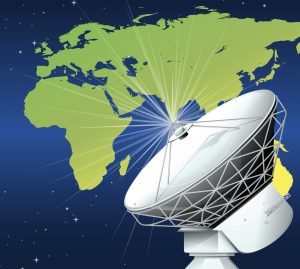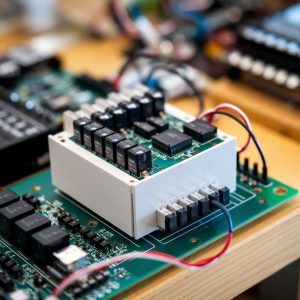Items of № 9, 2024
Technical and regulatory aspects for the implementation of direct to device satellite systems
M.V. Strelets, Geyser-Telecom, LLC, head of department, Ph.D.; mstrelets@g-tl.ru
A.N. Kostin, Geyser-Telecom, LLC, deputy head of department; kostin@g-tl.ru
A.S. Pastukh, The M.I. Krivosheev Radio Research & Development Institute (NIIR), head of laboratory; apastukh@lenta.ru
E.E. Devyatkin, NIIR, director of Advanced Wireless Communication Technologies Research Center; edevyatkin@niir.ru
O.L. Mironova, NIIR, leading engineer; mironovaol@niir.ru
Abstract. The article considers the development of technology for direct connection of smartphones to satellites to provide seamless service in hybrid 4G/5G/6G networks (Direct-to-Device/D2D or Direct-to-Cell/D2C). The analysis has been performed regarding current activities of the International Telecommunication Union on studies related to the development of an international regulatory framework for direct to device satellite access, including compatibility studies with terrestrial networks of the International Mobile Telecommunications (IMT). A number of technical aspects of the implementation of satellite systems with direct to the device connectivity are considered, including available frequency bands, directionality of frequency plans, duplex type, as well as possible difficulties with electromagnetic compatibility. An analysis of national approaches to the development of a regulatory framework for direct to device satellite access was carried out.
Keywords: Direct-to-Device/D2D, Direct-to-Cell/D2C, WRC-27, ITU-R, 4G/5G/6G, IMT, FDD, TDD.
The current state of the methodological apparatus for monitoring the provision consumers with wireless communication services in the current regulatory legal acts of the Russian Federation
S.I. Lopato, The M.I. Krivosheev Radio Research & Development Institute (NIIR), Center for Research of Big Data Processing Systems, deputy director; lopatosi@niir.ru
Abstract. The article provides an overview of the requirements for the availability, accessibility and quality of wireless communication services contained in the current regulatory legal acts of the Russian Federation and necessary as input data for methods of assessing the current availability of telecommunications services to consumers. The analysis of the completeness of these characteristics and the additions required to them is given.
Keywords: telecommunication infrastructure, mobile radiotelephone communication, wireless internet access, availability, accessibility, quality of telecommunication services.
Joint automatic antenna selection and precoding in Massive MIMO communication systems
V.B. Kreyndelin, Moscow Technical University of Communications and Informatics (MTUCI), chief of department, professor, Dr.Sci.(Tech.); vitkrend@gmail.com
M.V. Golubev, MTUCI, applicant; m.golubyev@gmail.com
Abstract. Joint precoding and antenna selection on the receiving a nd transmitting is one of the promising areas of research for implementation of Multiple Transmission Receiving Points(Multiple TRP)approaches in Massive MIMO systems, which are actively developing in 5G networks. The proposed algorithm makes it possible to effectively use feedback from the receiver by analyzing propagation paths and using precoding on the transmitting side. Proposed algorithm has potential tradeoffs between performance and computational complexity which is subject for further research.
Keywords: precoding, massive MIMO, antenna selection, reduced channel matrix, multiple TRP.
Research of neural network codec configurations for adaptive FPV video stream frame compression system when controlling unmanned systems. Part I: Methodology
А.A. Berezkin, Bonch-Bruevich State university of telecommunications (SPbSUT), associate professor, Ph.D.; berezkin.aa@sut.ru
A.A. Chenskiy, SPbSUT, masters student; chenskii.aa@sut.ru
R.V. Kirichek, SPbSUT, rector, professor, Dr.Sci.(Tech.); kirichek@sut.ru
A.A. Zaharov, The M.I. Krivosheev Radio Research & Development Institute (NIIR), deputy director general, associate professor, Ph.D.; a.zaharov@niir.ru
Abstract. In this work we investigate different configurations of neural network variational autoencoders of VQ and KL types (VQ-f4, VQ-f8, VQ-f16, KL-f4, KL-f8, KL-f16, KL-f32) from the Stable Diffusion models for the possibility of their use for video stream frame compression in FPV control of unmanned systems. The first part of the paper summarizes the results of studies of compression and quantization of latent spaces of variational autoencoders, presents a modification of neural network codec, data sets and discusses the methodology of experiments.
Keywords: variational autoencoder, quantization, data compression, neural networks, latent space, video stream compression, FPV control, UAV.
Features of segmentation in modern communication networks
E.A. Gaifutdinov, Moscow technical university of communications and informatics, postgraduate; e.a.gaifutdinov@mtuci.ru
Abstract. The purpose of this article is to identify and analyze methods for increasing network fault tolerance by segmenting its resources and reducing the time complexity of software-defined network controller backup algorithms when searching for matches between traffic header parameters and filtering rules on highly loaded network segments. The following results were obtained: methods for reserving the control loop of network segments were determined, an algorithm for efficient load balancing on the control loop was found, and a method for filtering traffic in highly loaded segments was considered.
Keywords: redundancy, balancing, segmentation, network traffic, filtering.
Modular HF broadcasting
V.A. Ruzhnikov, Povolzhskiy State University of Telecommunications and Informatics (PSUTI), rector, associate professor, Ph.D.; rv@psuti.ru
M.Yu. Spodobaev, Digital Independence LLC, deputy general director, Ph.D.; mspd@independence.digital
Yu.M. Spodobaev, PSUTI, advisor, professor, Dr.Sci.(Tech.); y.spodobaev@psuti.ru
Abstract. The article actualizes the problem of restoration of long-range radio broadcasting in the HF range. The subject of research is equipment and antennas that form an ionospheric radio channel. The goal is to propose a principle of organization and develop the appearance of radio broadcasting equipment. A modular principle is proposed that allows radio broadcasting to begin in the shortest possible time. The basis of the radio broadcasting module is a rotary in-phase antenna SGD RA, which is supplemented by a compartment with generator equipment, a diagram-forming circuit, control and power supply systems.
Keywords: long-range radio broadcasting in the HF range, radio broadcasting module, rotary in-phase antenna, compartment with equipment.
Using the Kosarayu and k-means methods to form clusters
L.A. Tremasova, Moscow technical university of communications and informatics (MTUCI), postgraduate; l.a.tremasova@mtuci.ru
A.A. Pervukhina, MTUCI, student; aluca@gmx.com
D.V. Gadasin, MTUCI, deputy head of department, associate professor, Ph.D.; dengadiplom@mail.ru
Abstract. In conditions of pulsating network traffic, it is very often observed that one node is underloaded, while another is overloaded. To distribute the load between network nodes, you can use their clustering using the Kosaraju and k-means algorithms. Each of the algorithms has its own strengths and weaknesses. The paper considers the possibility of joint application of these methods.
Keywords: clustering algorithms, load balancing, Kosaraju algorithm, inverted graph, k-means algorithm, cluster organization.
Improving noise immunity of data transmission system using differential synchronous amplifiers on a pair of complementary MOSFET transistors
T.A. Phan, Moscow Technical University of Communications and Informatics, postgraduate; alexpta96@gmail.com
Abstract. The operation and characteristics of a differential amplifier on a pair of complementary MOSFETs, which can be used to reduce the phase noise level in a phase modulation data transmission system, are considered in detail. Simulations of calculations of the dependence on the frequency of the output differential signal of the amplifier and the transmission coefficients of the difference and in-phase signals were performed. A new phase noise compensation method based on a differential amplifier on a pair of complementary MOSFET transistors is proposed. The main focus of this study is to analyze the constellation diagram, which shows the robustness of the communication system to phase noise. Using constellation diagrams, digital communication systems can be diagnosed for data transmission errors. A differential amplifier on a pair of complementary MOSFET transistors reduces the constellation rotation of the signal constellation at the output. This means that the amplifier under study will provide phase noise suppression capability.
Keywords: differential amplifier, phase noise, noise immunity, complementary MOSFET transistors, phase modulation.









